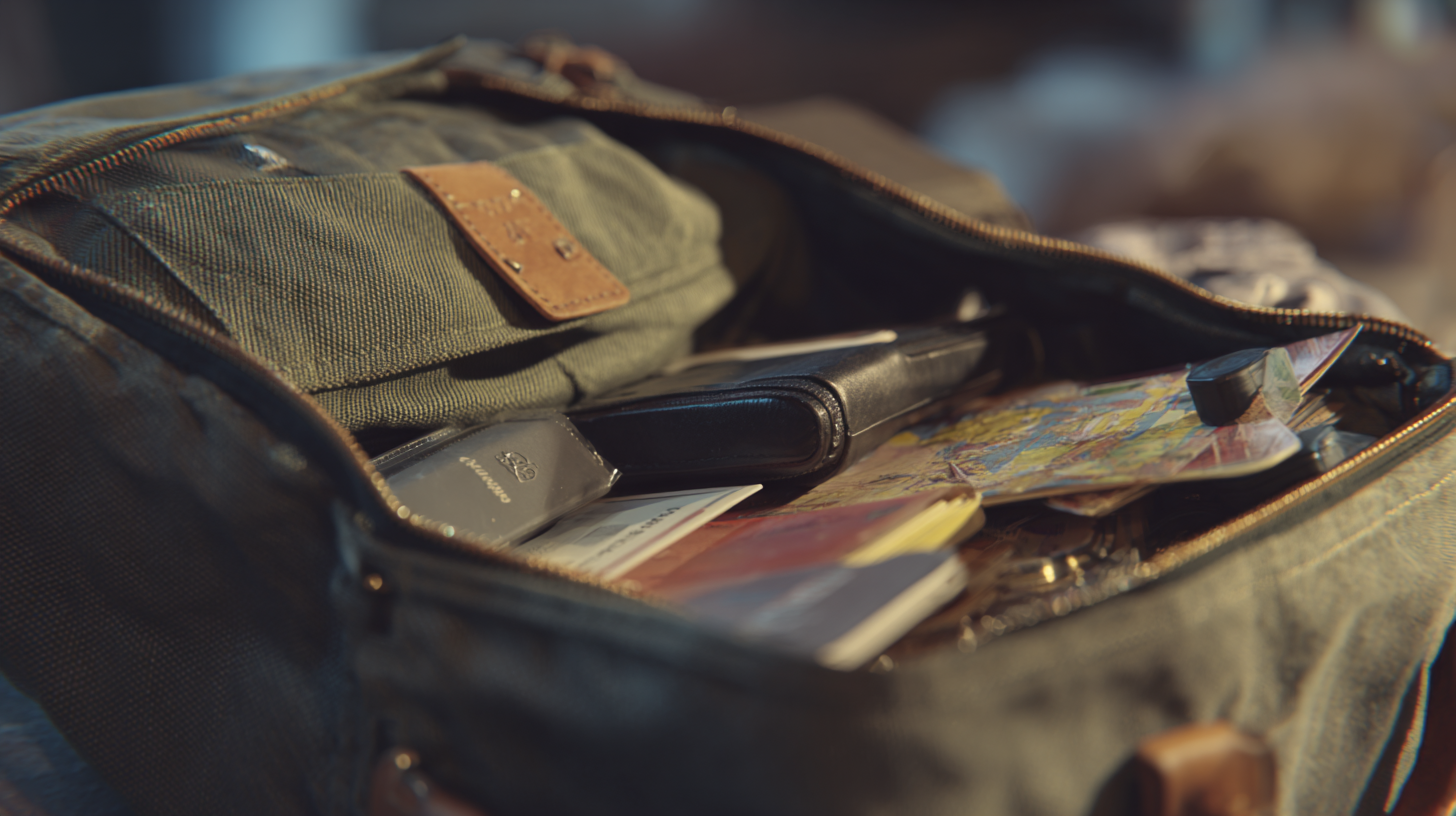 +86 178 5514 5298
+86 178 5514 5298
Leave Your Message
-
 CONTACT NUMBER
CONTACT NUMBER -
 CONTACT NUMBER
CONTACT NUMBER -
 CONTACT NUMBER
CONTACT NUMBER



In the intricate world of shipping hazardous materials, adhering to the UN 3373 standards is paramount for ensuring safety and compliance. The UN 3373 bag serves as a crucial component in the transportation of biological substances, as indicated by the 2021 Global Logistics Report, which highlights that nearly 30% of logistics failures are attributed to improper packaging. As companies increasingly prioritize compliance with international shipping regulations, the demand for innovative alternatives to traditional UN 3373 bags has surged. Recent industry studies reveal that forward-thinking solutions can reduce packaging waste by up to 40% while enhancing safety measures, thus revolutionizing the shipping of sensitive materials. This blog explores these alternatives, addressing common issues associated with standard UN 3373 bags and providing fresh insights into optimizing shipping strategies for today's evolving marketplace.

When shipping biological substances, adherence to UN 3373 compliance is crucial for ensuring safety and reliability. UN 3373 regulations specifically pertain to the transport of diagnostic specimens and other biological materials that pose minimal risk to public health. According to a report by the IATA, over 40% of biological shipments utilize UN 3373-compliant packaging, underlining the importance of these regulations in protecting both carriers and recipients during transit.
Compliance with UN 3373 involves using packaging that is designed to prevent leakage and maintain the integrity of the specimens. Key elements include robust outer containers, absorbent materials, and proper labeling. The Occupational Safety and Health Administration (OSHA) data indicates that improper shipping practices can lead to significant safety hazards, including contamination and exposure to pathogens. As such, understanding the nuances of UN 3373 compliance not only mitigates legal risks but also ensures that these vital materials are transported effectively and ethically within the supply chain.

As the demand for secure and efficient shipping solutions grows, exploring innovative materials and designs as alternatives to traditional UN 3373 bags presents exciting opportunities. According to a recent report by MarketsandMarkets, the global protective packaging market is projected to reach $30 billion by 2025, driven by increased attention on safety and compliance in shipping hazardous materials. This rising trend indicates a significant shift toward utilizing advanced materials designed to enhance both protection and sustainability in packaging.
One notable alternative is the application of bio-based polymers, which can replace conventional plastic bags. These materials not only offer robust physical protection but also reduce environmental impact, aligning with the global push for more sustainable practices. Research from Smithers reveals that biopolymers could capture a market share exceeding 12% in the packaging sector within the next few years. Additionally, the innovative use of smart packaging technologies—such as temperature and humidity indicators—can further elevate the safety of shipped items, ensuring that contents remain within specified conditions during transit. By leveraging these innovative options, businesses can meet stringent regulatory requirements while embracing more eco-friendly practices.
When it comes to shipping, especially hazardous or biological materials under guidelines like UN 3373, finding cost-effective solutions while maintaining quality is paramount. Many businesses are seeking innovative alternatives that not only meet regulatory requirements but also fit within their budget constraints. Employing smarter, more economical packaging options can lead to significant savings without sacrificing safety.
**Tip 1:** Consider using bulk purchases for packaging materials. Not only do these often come at a reduced price, but they also ensure that you have a consistent supply on hand for when you need to ship items quickly.
**Tip 2:** Explore alternative materials that comply with shipping regulations but are less expensive than traditional options. For example, biodegradable and recyclable materials can often deliver both environmental benefits and cost savings.
By balancing quality with affordability, businesses can streamline their shipping process and maintain compliance without financial strain. Engaging with suppliers who specialize in innovative packaging solutions can further enhance your shipping strategy, making it both effective and economically viable.

When it comes to shipping biological substances, customizing your solutions can significantly enhance safety and efficiency. While the UN 3373 bag is a widely recognized standard, there are numerous alternatives that can be tailored to specific needs. For instance, using insulated packaging can be critical for temperature-sensitive items, while specialized cushioning materials can help protect fragile samples during transit. By focusing on the unique requirements of each shipment, businesses can select or create packaging solutions that better suit their products.
Moreover, personalized labeling and documentation can streamline the shipping process, ensuring that all necessary information is readily available for handlers and recipients. Customizing these elements not only reinforces compliance with shipping regulations but also promotes better tracking and accountability throughout the delivery process. Utilizing innovative designs and materials can further enhance the user experience, making the shipping procedure smoother and more reliable. Ultimately, by exploring and implementing tailored alternatives, businesses can address specific challenges in their shipping operations while maintaining the integrity of their products.
As we venture into the future of packaging for biological substances, several trends are poised to reshape the industry landscape. The increasing demand for sustainable solutions is prompting businesses to explore innovative alternatives to traditional packaging materials. The rise of bio-based materials, derived from renewable resources, is a significant trend as companies seek eco-friendly options that cater to both environmental concerns and regulatory requirements, such as those outlined by UN 3373 for shipping biological substances.
Moreover, the COVID-19 pandemic has accelerated the shift towards e-commerce and online retail channels, highlighting the need for packaging that not only protects the integrity of biological products but also ensures safety during transit. Brands are now focusing on customized packaging solutions that enhance user experience while reflecting sustainability values. The integration of smart technology into packaging, such as QR codes for tracking and automated compliance checks, is also becoming increasingly prevalent. As we head towards 2024, businesses in the biological packaging sector must stay ahead of these trends to meet evolving consumer expectations and regulatory standards.
